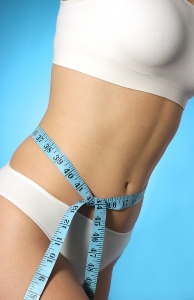Atkins Diet Analysis Helps You Understand Low Carb Dieting
This Atkins diet analysis will give you the groundwork for understanding how the revolutionary weight loss program developed by Dr. Atkins works. Because it flies in the face of what nutritionists and health care professionals have been saying about weight loss for years, some people can’t imagine how it could work.
Not surprisingly, however, it has become one of the most popular weight loss programs in the country. Why? Because it does work, and it works while letting you eat plenty of rich, satisfying foods. There are some things you will have to cut out of your diet for a while, and some that you will have to continue to limit severely for the long term, but most people find it isn’t nearly as restrictive as other diets.
My Atkins Diet Analysis on the Phases of the Weight Loss Program
The Atkins Diet is based on eliminating most carbohydrates from your diet. During the earliest phase (Induction), you can only have twenty grams of carbs or less, and these will come from vegetables on a list of accepted foods. Gradually you will move through three other steps (the Weight Loss Phase, Pre-Maintenance Phase and finally the Maintenance Phase) until you reach a point where you can stay on an Atkins lifestyle permanently to keep your weight at the proper level.

My Atkins Diet Analysis on Resetting Your Metabolism
The basis of Dr. Atkins’ approach is using the kinds of foods you eat to reset your body’s metabolism and what it burns for fuel. Because you aren’t eating much in the way of carbs, your body is forced to burn more of your stored body fat for energy. It works because it is very easy for your body to burn carbohydrates, which are a quick energy source. When you are on a low carb diet, however, the body turns to other sources of energy – such as body fat.
Why You Lose Weight on the Atkins Diet
There are two reasons you lose weight on the Atkins Diet. First, you’re using more of your own body fat as fuel because there are no longer excess carbs available. Added to that, it is actually a more complicated process for your body to convert fat into fuel for energy, so you actually have to use up more calories to use that stored fat. The very process means your metabolism has to “rev up” to produce the fuel it needs. You’ll burn more calories faster!
My Atkins Diet Analysis on the Whole Picture
It’s important in the analysis of any diet to look at the whole picture. The Atkins diet plan shouldn’t be judged by the Induction Phase, which some people criticize because it is so restrictive. But this phase is only the tip of the iceberg. It lasts only a few weeks, and you aren’t supposed to stay on it long term. In fact, it is used to increase your metabolism and stabilize your blood sugar, two keys to the diet.
Atkins Means Low Carb, Not "No Carb"
The Atkins approach has four phases because it is designed to become increasingly flexible as you shed the unwanted pounds. With each phase, you can slightly increase your carb intake by adding new foods. It’s one reason the diet is so popular – it’s low carb, not "no carb." Eventually you get a feeling for how much you can and can’t eat, and how to add carbs that are healthy (such as whole grains).
My Atkins Diet Analysis on Healthy Eating Habits & Supplements
The Atkins Diet also stresses staying healthy – supplements are an important ingredient. Because Dr. Atkins recognized that you should take vitamins and minerals while dieting, many people actually discover that they feel better on the diet because they may be taking supplements for the first time in their lives.
The low carb approach of Atkins also focuses on cutting out foods that are processed, refined and full of sugars. Nearly all health care professionals now agree that this is essential to good health. Instead, the diet stresses unprocessed, fresh foods that are packed with nutrients.
The Atkins Diet has been used by over 30 million Americans and is still going strong. This Atkins diet analysis makes it obvious that Dr. Atkins has developed a program that works well and can contribute to your long-term health.
Is the Atkins Diet Safe?

Why Some Doctors are Against the Atkins Diet
The 4 Phases

The Complete Atkins Induction Diet Food List
Success Stories

Share Your Atkins Success Story


